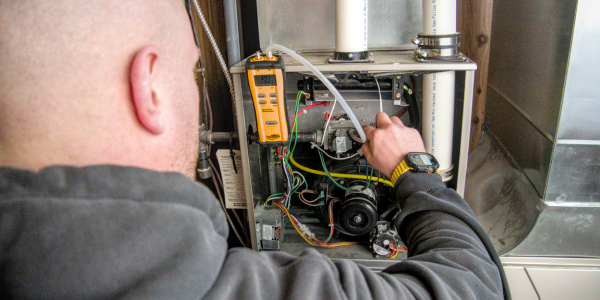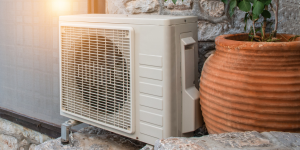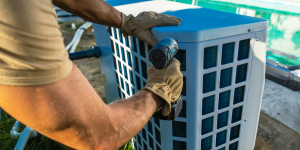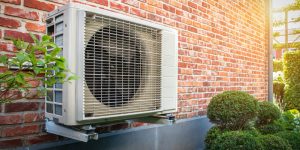When it comes to keeping your home warm and cozy, annual furnace maintenance is a must. Neglecting regular upkeep can lead to higher energy bills, unexpected breakdowns, and even safety risks. But why are annual inspections and tune-ups so essential? In this article, I’ll break down the top 5 reasons why annual furnace maintenance is a smart investment for your home. Plus, we’ll provide a handy checklist you can use to ensure your HVAC service provider covers everything needed to keep your system running efficiently and safely.
Is Annual Furnace Maintenance Necessary?
If you want to ensure your heating system operates efficiently, safely, and reliably, then annual furnace maintenance is absolutely necessary. Regular maintenance helps catch minor issues before they turn into costly repairs or complete system breakdowns—especially during cold winters when your furnace works its hardest.
Beyond preventing inconvenient failures, annual tune-ups:
- Improve energy efficiency
- Extend your furnace’s lifespan
- Maintain optimal indoor air quality
Skipping yearly maintenance not only risks higher energy bills and expensive repairs but can also void your manufacturer’s warranty, leaving you unprotected if something goes wrong.
Top 5 Reasons for Annual Furnace Maintenance
1. Boosts Energy Efficiency
Think of your furnace as an Olympic athlete. To perform at its best, it needs regular training and fine-tuning. Annual maintenance helps ensure all the components are clean, lubricated, and running efficiently. A well-maintained furnace uses less energy to heat your home, which means lower bills for you and fewer greenhouse gases for the planet. Win-win!
Pro Tip: A dirty filter or clogged burner can seriously drag down efficiency. Your HVAC technician will tackle those issues during a tune-up.
2. Prevents Surprise Breakdowns
No one wants to wake up to a frosty house and a furnace on strike. Regular maintenance helps catch small issues before they turn into expensive repairs or mid-winter breakdowns. Think of it as a little insurance policy for your peace of mind.
Fun Fact: Most furnace breakdowns happen because of neglect. A simple annual checkup can save you from an emergency call and a hefty repair bill.
3. Extends Your Furnace’s Lifespan
You wouldn’t drive your car for years without an oil change, so why treat your furnace any differently? Regular maintenance keeps everything running smoothly, reducing wear and tear. A well-cared-for furnace can last 15-20 years or more. Skip the maintenance, and you might be shopping for a new one much sooner.
Why It Matters: Replacing a furnace isn’t cheap. Annual maintenance helps you get the most out of your investment.
4. Improves Air Quality
Your furnace does more than just heat your home—it also circulates the air you breathe. Over time, dust, dirt, and allergens can build up in the system, affecting indoor air quality. A professional tune-up includes cleaning these components, helping you breathe easier all winter long.
Customer Insights: After furnace maintenance, a lot of customers noticed an improvement in allergy symptoms.
5. Keeps You Safe
Safety first! A neglected furnace can pose serious risks, like carbon monoxide leaks or even fires. During maintenance, your technician will check for potential hazards, such as a cracked heat exchanger or a malfunctioning gas valve. It’s not just about comfort—it’s about protecting your family.
Quick Reminder: Carbon monoxide is odorless and deadly. Regular maintenance is your first line of defense.

What Does Annual Furnace Maintenance Include?
Annual furnace maintenance is a comprehensive service performed by an HVAC professional to ensure your furnace operates efficiently and safely. While the exact tasks may vary slightly depending on your furnace type, a typical maintenance visit includes:
- System Inspection: A thorough examination of the entire furnace, including burners, heat exchangers, and ductwork, to check for damage, wear, or potential safety hazards.
- Filter Replacement or Cleaning: Cleaning or replacing the air filter to improve airflow and maintain indoor air quality.
- Lubrication of Moving Parts: Ensuring all mechanical components, like motors and fans, are properly lubricated to reduce friction and prevent unnecessary wear.
- Electrical System Check: Inspecting and tightening electrical connections, testing safety controls, and assessing the thermostat to ensure proper functionality.
- Cleaning of Components: Removing dust, dirt, and debris from critical areas such as the blower assembly, burners, and pilot light to improve performance and efficiency.
- Performance Testing: Running the furnace to assess its efficiency, airflow, and temperature output, ensuring it’s ready to handle the demands of the season.
This proactive service not only helps prevent breakdowns but also optimizes energy efficiency, extending the life of your furnace and saving you money in the long run.
Furnace Maintenance Checklist
Here is some critical information you should have on file for your annual furnace maintenance.
- Manufacturer Name
- Model Number
- Serial Number
- Original Installation Date
- Filter Replacement Log (recommendation: quarterly)
During your annual furnace maintenance, it’s important to ensure your HVAC technician addresses all the critical components to keep your system running efficiently and safely. Use this checklist as a guide to confirm every essential task is completed, or share it with your service provider to ensure no detail is overlooked:
- Inspect and clean burners
- Check heat exchanger for cracks or damage
- Inspect and replace air filters if needed
- Inspect blower motor and clean components
- Lubricate moving parts (if applicable)
- Inspect electrical connections and tighten
- Test thermostat operation
- Inspect flue and venting for obstructions or leaks
- Measure and verify gas pressure
- Verify proper cycling and operation
6 Signs Your Furnace Needs Maintenance
Even if you’ve kept up with annual maintenance, your furnace may show signs that it needs extra attention. Recognizing these early warning signs can prevent costly repairs and improve your system’s efficiency. Here are some common indicators that your furnace requires maintenance:
- Uneven Heating: If certain rooms in your home are too cold while others are overly warm, your furnace may not be distributing heat evenly. This could indicate issues with the blower motor, ductwork, or thermostat.
- Rising Energy Bills: An unexplained increase in your heating bills could mean your furnace is working harder than necessary due to clogged filters, dirty components, or mechanical inefficiencies.
- Unusual Noises: Rattling, banging, or squealing noises are often signs of loose components, worn belts, or issues with the motor.
- Frequent Cycling: If your furnace turns on and off more frequently than usual, it could indicate problems with the thermostat, airflow, or electrical connections.
- Strange Smells: A burning smell may suggest dirty components, while a gas odor could indicate a serious safety issue that requires immediate attention.
- Yellow Pilot Light: A healthy pilot light should be blue. If it’s yellow, it may indicate improper combustion or a carbon monoxide issue—both of which need prompt professional attention.
Addressing these signs early can prevent small problems from becoming major repairs or safety risks.
Professional vs. DIY Furnace Maintenance
While DIY tasks can help maintain your furnace, certain aspects of maintenance should always be handled by a professional to ensure safety and efficiency. Here’s a breakdown of what you can do yourself and what’s best left to the experts:
DIY Furnace Maintenance:
- Replace air filters regularly.
- Keep vents and registers clean and unobstructed.
- Check the thermostat settings and batteries.
- Clear debris and ensure proper airflow around the furnace.
Professional Furnace Maintenance:
- Inspect and Clean Burners: A technician will ensure burners are free of debris and firing correctly for efficient combustion.
- Heat Exchanger Inspection: Professionals check for cracks or damage that could lead to dangerous carbon monoxide leaks.
- Lubricate Moving Parts: Proper lubrication of components like blower motors reduces wear and tear.
- Gas Pressure Measurement: Ensuring proper gas pressure requires specialized tools and expertise.
- Electrical System Checks: Tightening connections, testing controls, and ensuring safe operation is critical and requires technical knowledge.
- Flue and Venting Inspection: A professional can identify blockages or leaks in the flue and venting system to prevent carbon monoxide hazards.
Attempting complex maintenance tasks without the right tools or knowledge can lead to safety issues or further damage to your furnace. Trusting an experienced HVAC technician ensures your system operates safely and efficiently while avoiding costly mistakes.

Ottawa Furnace Maintenance: Choose Wamboldt HVAC
When it comes to keeping your home warm and your furnace running smoothly during those Ottawa winters, trust Wamboldt HVAC to deliver expert maintenance you can count on. Plus, you’ll avoid the dreaded mid-January furnace failure (and the icy toes that come with it!).
Our experienced HVAC technicians provide thorough inspections, professional tune-ups, and tailored advice to ensure your system operates efficiently and safely all winter long. Whether you’re looking to extend the life of your furnace, reduce energy bills, or prevent costly breakdowns, we’ve got you covered.
Contact us today to schedule your annual furnace maintenance and enjoy peace of mind knowing your home will stay cozy no matter how cold Ottawa gets!







